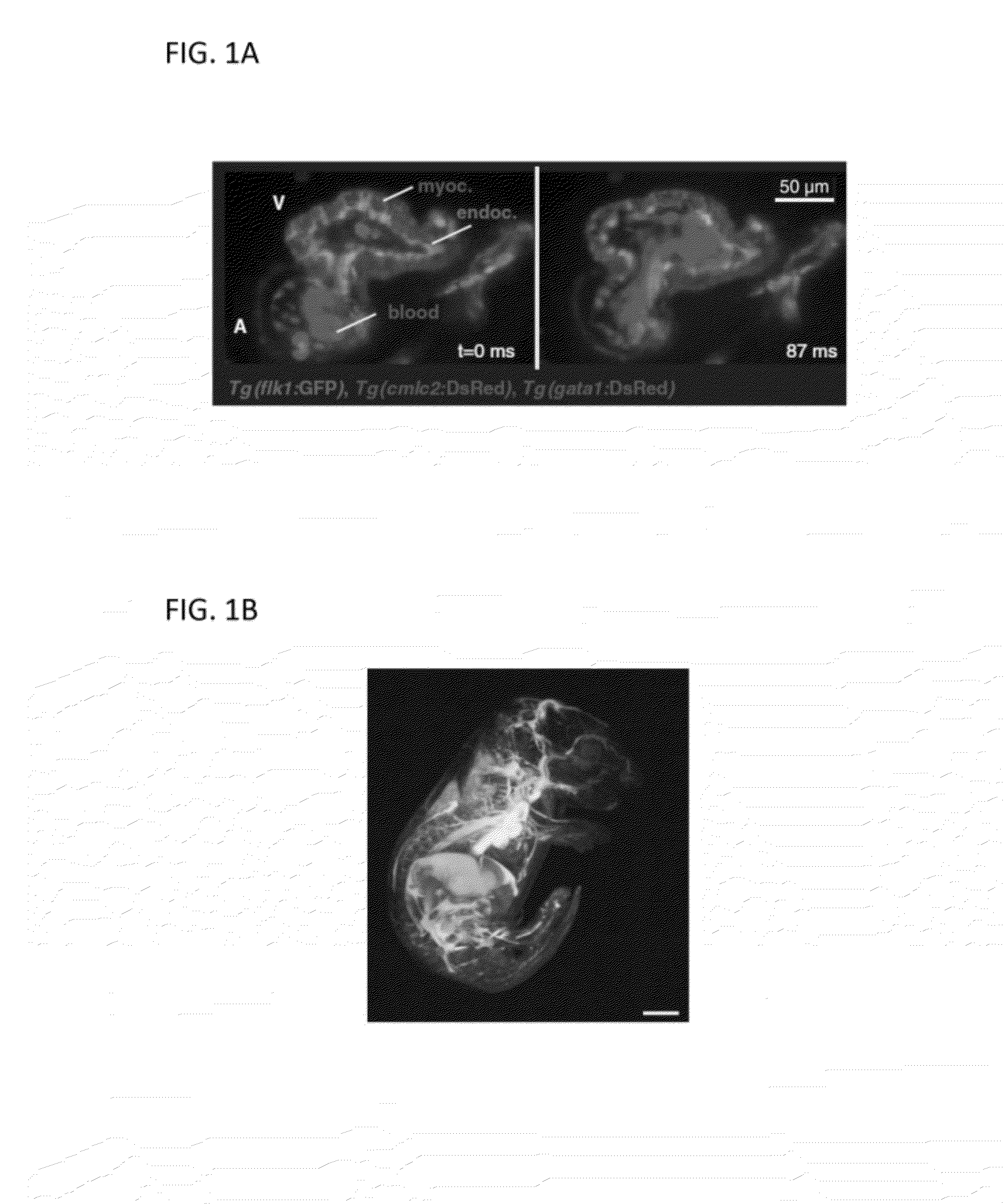Simultaneous orthogonal light sheet microscopy and computed optical tomography
- Summary
- Abstract
- Description
- Claims
- Application Information
AI Technical Summary
Benefits of technology
Problems solved by technology
Method used
Image
Examples
first embodiment
[0102]In a first embodiment these axes are perpendicular. In this method all the OLM data is obtained for a volume at a fixed sample rotation along with partial COT data and then the sample is rotated. For example, as shown schematically in FIGS. 8 and 9, the sample is first imaged at orientation for light sheet 1. After a full stack is acquired (as shown schematically in FIG. 8), the sample is re-oriented such that the light sheet sample angle is as shown by light sheet 2. Another full stack is acquired before another rotation such that the orientation is as shown by light sheet 3. Using this method allows the OLM scan to incorporate multiple rotation views, which improves resolution. For example, it has long been known that providing front and back views improves OLM performance, but the additional views afforded by this method will further improve resolution. Accordingly, this perpendicular mode can be used for higher resolution OLM, but the COT data acquisition rate is much slow...
second embodiment
[0103]In a second embodiment the Z and rotational axes are parallel. In this method all the COT data is be acquired for the illuminated plane by rotating the sample about the axis of OLM imaging, as shown in FIG. 10. Then the illuminated plane is stepped before repeating the process. In this parallel method, OLM and COT can be timed to finish simultaneously, but it does not give the same multiple views of OLM as the perpendicular method.
[0104]In either method, COT requires rotation over 180 degrees, in steps of a specified number of degrees for best resolution if the illumination is symmetric with respect to axis of rotation, and requires rotation over 360 degrees, in steps of a specified number of degrees, for best resolution if the illumination is asymmetric with respect to axis of rotation. In the preferred implementation, the angles between the light sheets should be small enough such that the COT reconstruction will have enough resolution (typically less than 1 degree). Alterna...
PUM
 Login to View More
Login to View More Abstract
Description
Claims
Application Information
 Login to View More
Login to View More - R&D
- Intellectual Property
- Life Sciences
- Materials
- Tech Scout
- Unparalleled Data Quality
- Higher Quality Content
- 60% Fewer Hallucinations
Browse by: Latest US Patents, China's latest patents, Technical Efficacy Thesaurus, Application Domain, Technology Topic, Popular Technical Reports.
© 2025 PatSnap. All rights reserved.Legal|Privacy policy|Modern Slavery Act Transparency Statement|Sitemap|About US| Contact US: help@patsnap.com



